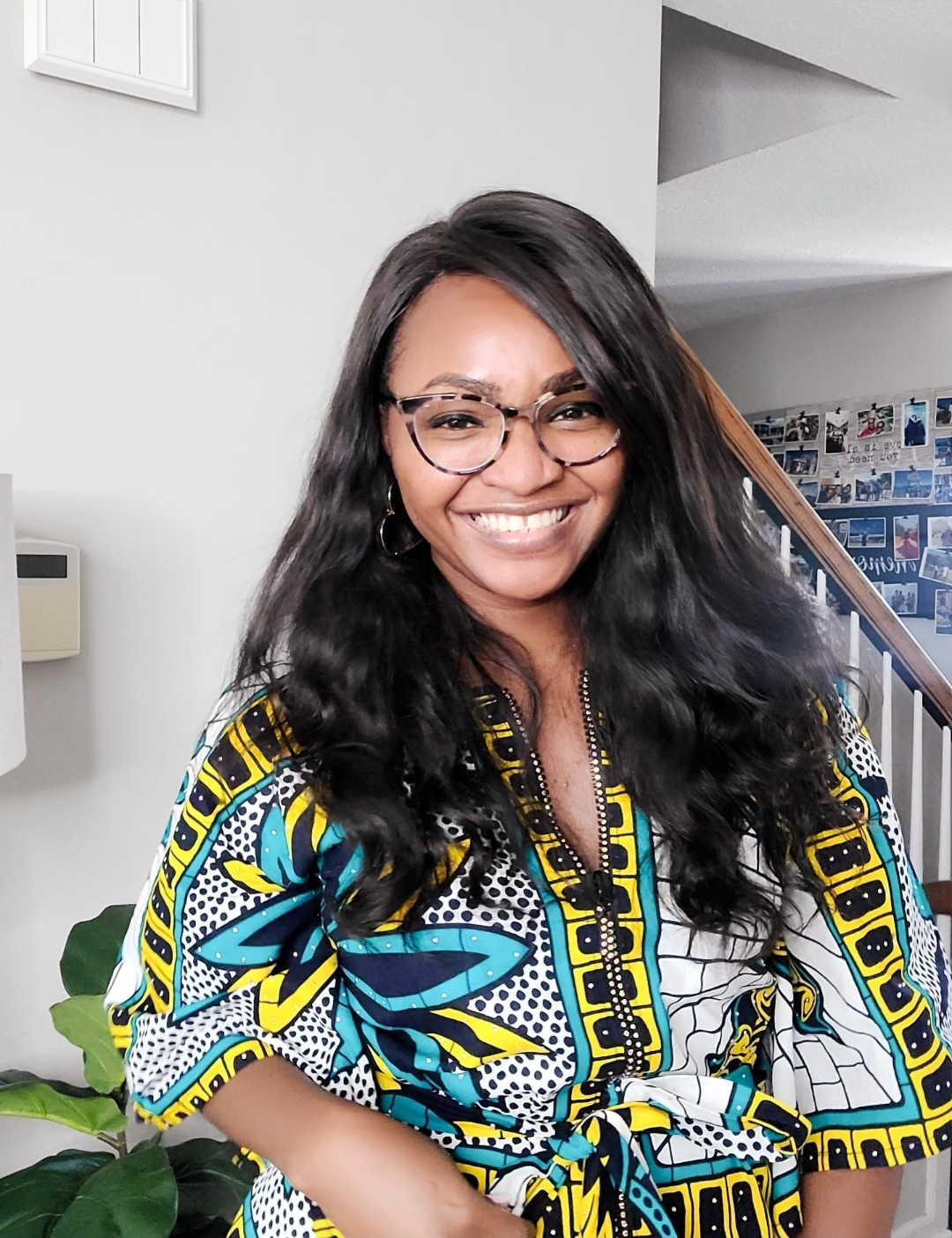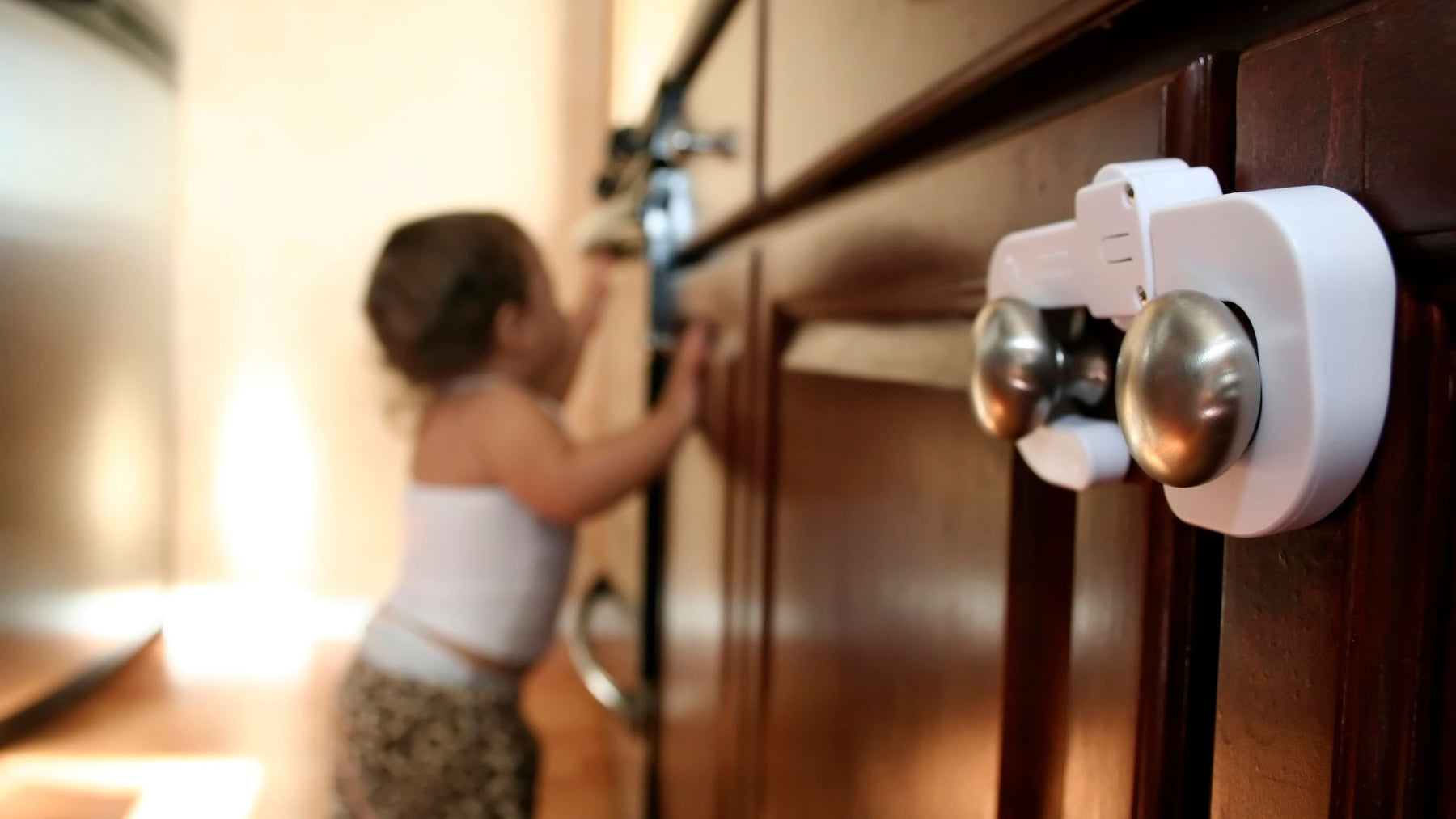
expert ideas for babyproofing your home
BY DR. NKEIRU ORAJIAKA, ER PEDIATRICIAN
How to make sure your little one is safe and sound from the kitchen to the crawl spaces.
Bringing a baby home can be so exciting. We look forward to their many firsts and the multiple emotions that come with having a newborn. When your little one arrives, keeping them safe becomes a critical goal, and that means babyproofing.
Shop our full safety & babyproofing collection here.
when should you babyproof?
The best time to babyproof is before your baby comes home. This leaves ample time to get it all done and allows you to focus on your baby after delivery.
Some families may also choose to babyproof just before their little ones reach major milestones like crawling, cruising, and walking. While this is also acceptable, babies are different and some may advance in milestones much faster than you expect them to, so the earlier you can babyproof, the better.
how to begin babyproofing
preparation:
- Every home is different in size and design/layout. You need to choose the safest options that work for your space. There are babyproofing professionals that could also help guide you.
- Babyproofing may also differ if you have kids of different ages, eg: a newborn and a toddler.
- Consider your family’s budget. Many affordable, yet safe alternatives exist.
- Write your areas down and tackle them one by one. This can help you stay organized and less likely to forget any location.
tackle the most-used rooms
nursery
Position your baby’s crib in areas that are safe. If possible, against a wall that is not directly near a window. While babies are less likely to pull up when they are newborns, as they grow, they may reach the window. If you have no option but to position near a window, be sure the window latches fully or use a window stop to limit movement to 4”.
Avoid placing wall decorations, including frames, just above your baby’s crib. These can easily fall and may hurt your baby.
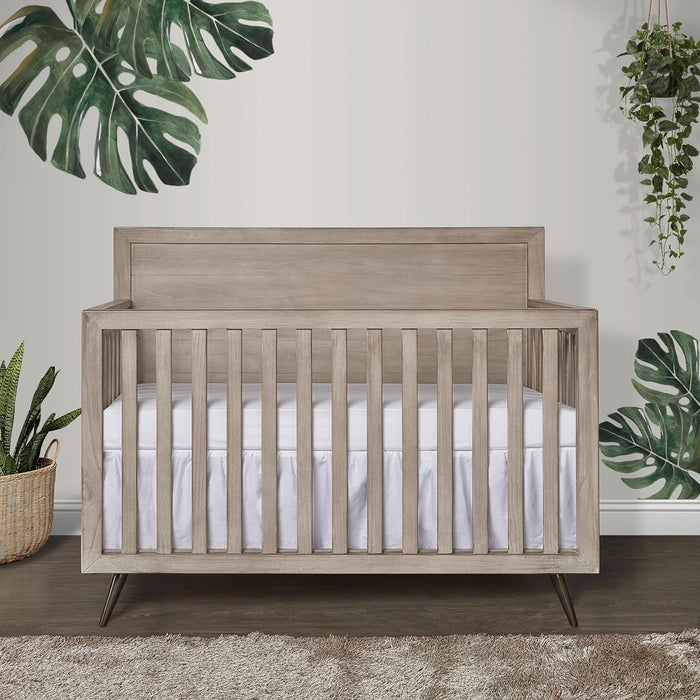
Evolur Stilnovo Mid Century 4-In-1 Convertible Crib
furniture anchors
Anchor all furniture to the wall: These can easily tip over and as the baby grows, crawls, or cruises, they may hold onto them for support. Anti-tip furniture anchors help steady heavy and light furniture.
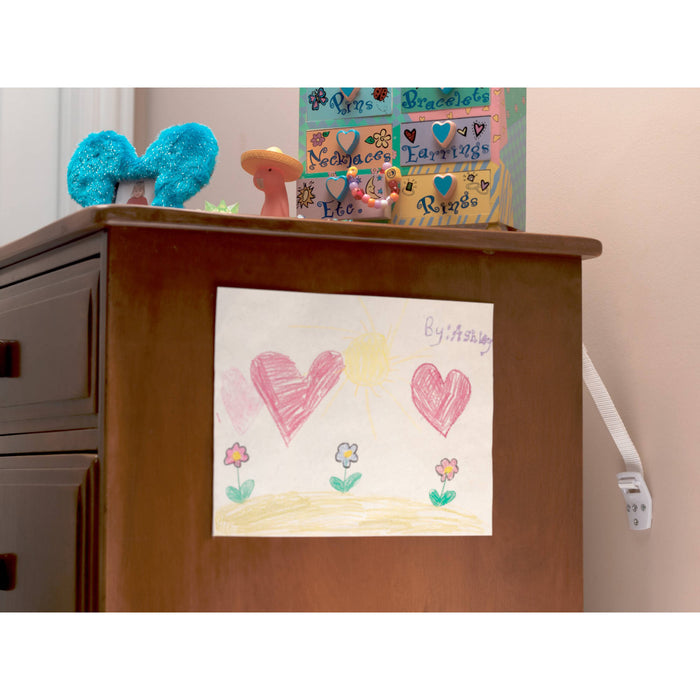
KidCo Anti Tip Furniture Strap
bathroom
Bath time can be fun for babies. Non-slip bath mats are helpful to keep your little one from slipping. Babies can wiggle and move around during a bath. Install a soft tub spout cover to protect your baby from bumping their head on the faucet. A bath tub may help keep your baby comfortable and steady during bath. However, remember to never leave your child unsupervised in any amount of water.
Door knob covers are also essential to keep your little ones from getting into bathrooms, when they start exploring.
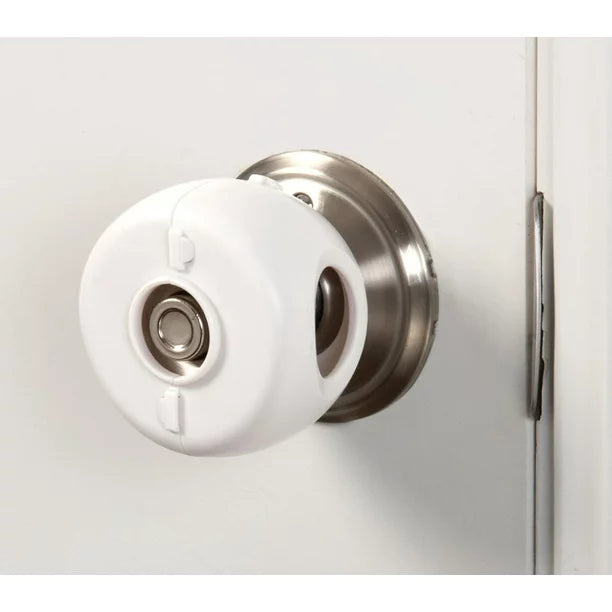
kitchen
Your baby may not be crawling or walking to the kitchen yet but be ready to babyproof your kitchen before they do.
Use child-safety cabinet latches that are child resistant but easy for adults to get access to. This helps keep your little ones safe. A safety slide lock is also a great option.
Remove chemicals, cleaning and laundry supplies from under the sink and store in locked high cabinets.
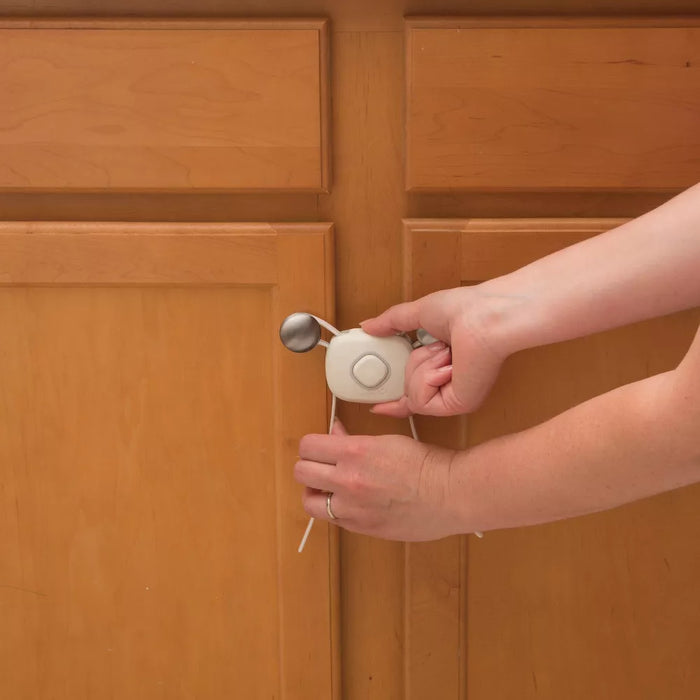
Safety 1st Outsmart Flex Child Safety Lock
use these throughout your home
baby monitors
Baby monitors help you keep an eye on your baby when you aren’t in the room. Be sure to install these baby monitors and cords at least three feet away from your baby's crib or playard.
Avoid mounting monitors on cribs. These may fall over and cords are a strangulation risk. If your child’s nursery and/or other rooms have blinds with long cords, consider investing in cordless window coverings or tie cords up so they do not have access to them.
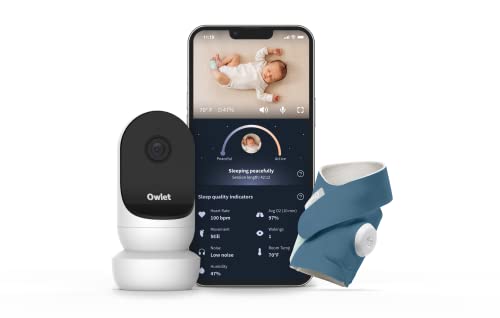
Owlet Dream Duo 2 Smart Baby Monitor with Dream Sock
baby gates
These are one of the best safety essentials to help keep babies away from danger. Most are used on stairs, but can also be used to confine areas in a living room where your child plays. If you have stairs, it is highly recommended to install baby gates on the top and bottom.
Two main types exist: the hardware installed and pressure mounted gates: The hardware mounted gates are drilled to the walls and are best used for stairs because kids are less likely to push these down. Pressure mounted gates are less sturdy because they are stuck to the wall by pressure and not drilled on the wall or door frame, so they may easily dislodge. These are best used in demarcating or confining areas on the same ground level (e.g.:, blocking your child from accessing the kitchen from the living room.)
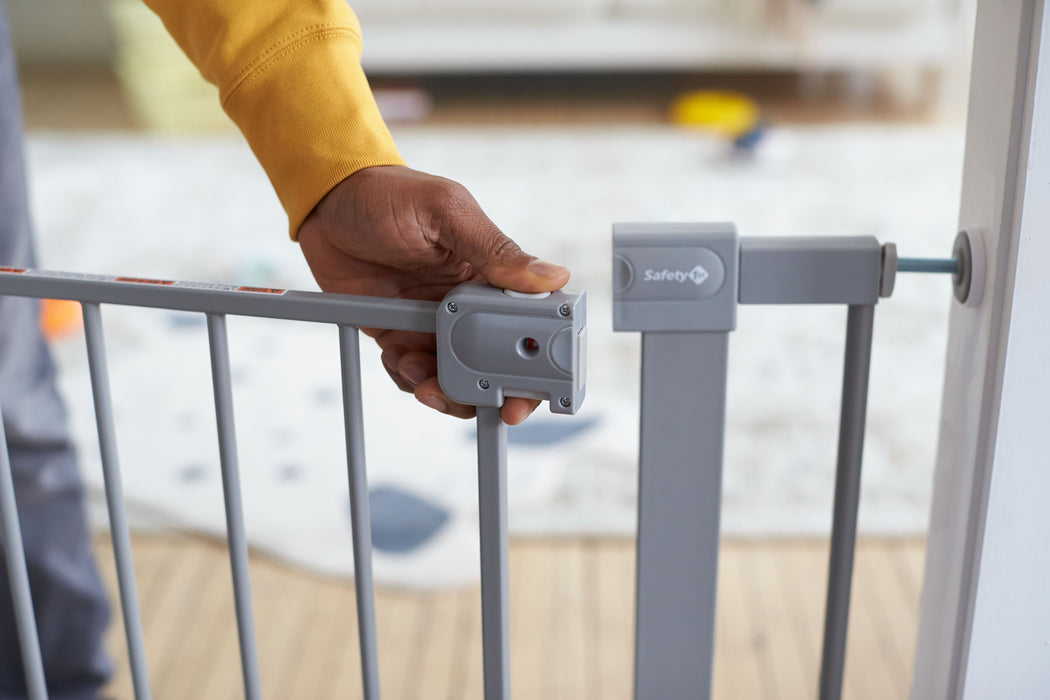
Safety 1ˢᵗ® Easy Install Auto-Close Gate
outlet covers
These are important to keep children safe from outlets. Kiddos are curious explorers and may insert fingers or objects into outlets, and in some cases suffer serious shock or burn injuries. Outlet caps or plugs are very handy and perfect for travel, but are also a choke risk and may not be the safest in homes where you plan to spend a longer time. Sliding outlet covers and outlet box covers may be preferred in many homes.
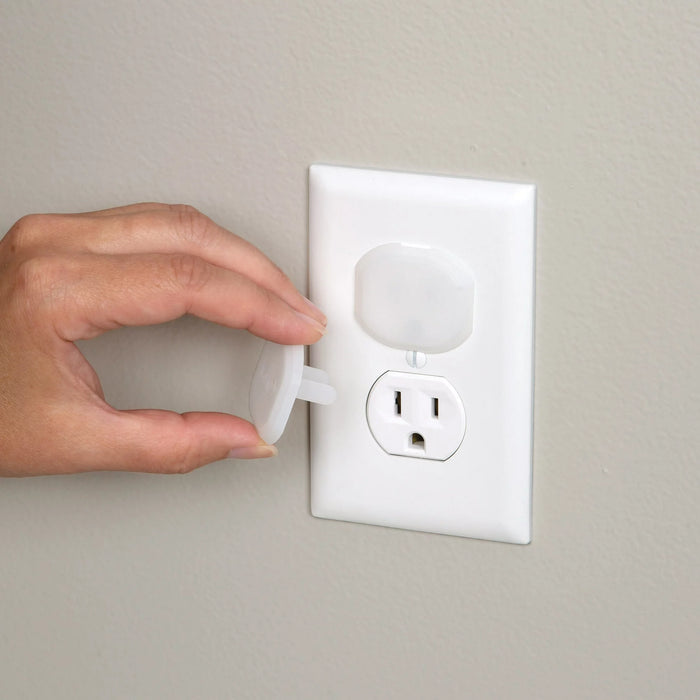
Safety 1ˢᵗ Plug Protectors (36pk), White
smoke and carbon monoxide detectors
Install smoke detectors in every room and carbon monoxide detectors in every bedroom in your house and check them monthly to be sure they are working properly. If you already have them, check and replace batteries.
Babyproofing may seem overwhelming and expensive, but you can shop for these items from all of your favorite brands. When you set up your baby registry, add any of the supplies that you need and let your loved ones buy them for you.
about Dr. Orajiaka
Dr. Nkeiru Orajiaka is a board-certified pediatrician, child health and safety expert, wife, and mom. As a strong believer that health education is the basis for maintaining healthy living, her blog features tips and truths in medicine and parenthood to help you along the parenting journey. Check out drnkeiru.com and follow her on Instagram at dr_norajiaka.
